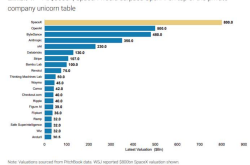Running Frequency Surpasses 3GHz! Gainward RTX 5050 WindForce OC Review: Effortlessly Handles All 1080P Games
![]() 07/25 2025
07/25 2025
![]() 748
748
I. Preface: Entry-Level Graphics Card Empowered by Cutting-Edge Technology
NVIDIA's previous entry-level graphics card, the RTX 3050, has now been surpassed by the demands of modern gaming, both in terms of technology and performance. Recognizing this, NVIDIA has introduced the RTX 50 series, with its own entry-level offering—the RTX 5050. Leveraging TSMC's 4N process technology and DLSS 4 multi-frame generation technology, the RTX 5050 effortlessly runs the latest 3A titles at the highest 1080P graphics settings.
As a core AIC partner of NVIDIA, Gainward has taken the RTX 5050 seriously. We have obtained the RTX 5050 WindForce OC in its sleek black version, alongside a variant featuring an all-white color scheme, ideal for building an all-white ITX system.
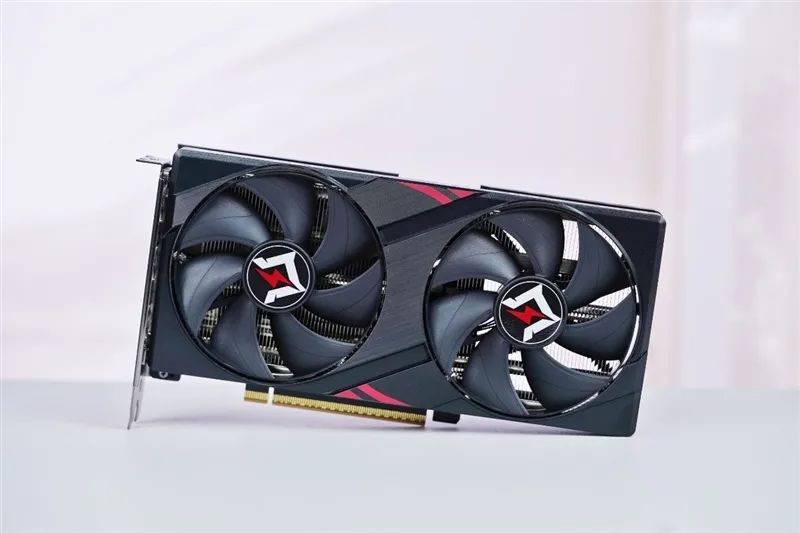
The Gainward RTX 5050 WindForce OC is powered by the GB207 core, boasting 3 GPCs, 10 TPCs, and 20 SM units, totaling 2560 stream processors—the same as the RTX 3050. However, its boost frequency of 2632MHz far surpasses the RTX 3050's 1777MHz, offering nearly 900MHz more. Under actual operation, the frequency can stabilize at an impressive 3000MHz, exceeding the RTX 3050 by over 1000MHz.
In terms of performance, the RTX 5050 easily outpaces the RTX 3050 by more than 50%, and when coupled with DLSS 4 multi-frame generation technology, the user experience is vastly superior to its predecessor.
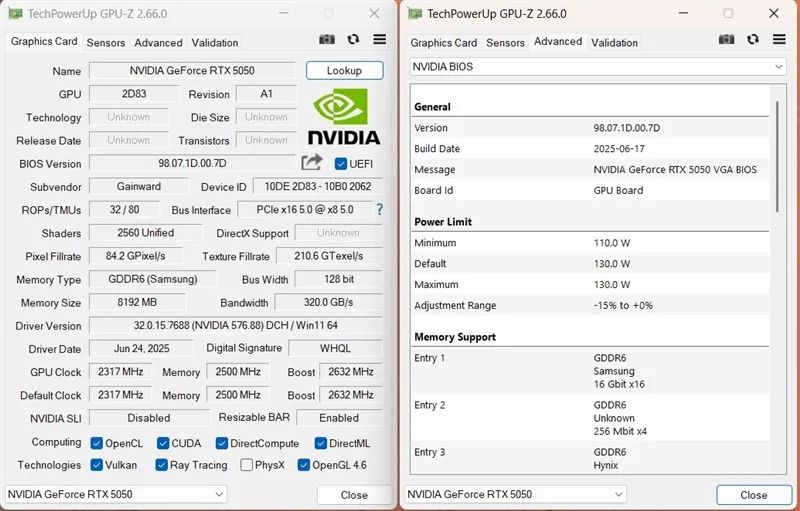
This GPU-Z screenshot of the Gainward RTX 5050 WindForce reveals a GPU boost frequency of 2632MHz, 50MHz above the official standard, with a TDP of 130W, identical to the reference model.
II. Image Appreciation: WindForce Mini Cooling System with 4+2 Phase Power Supply
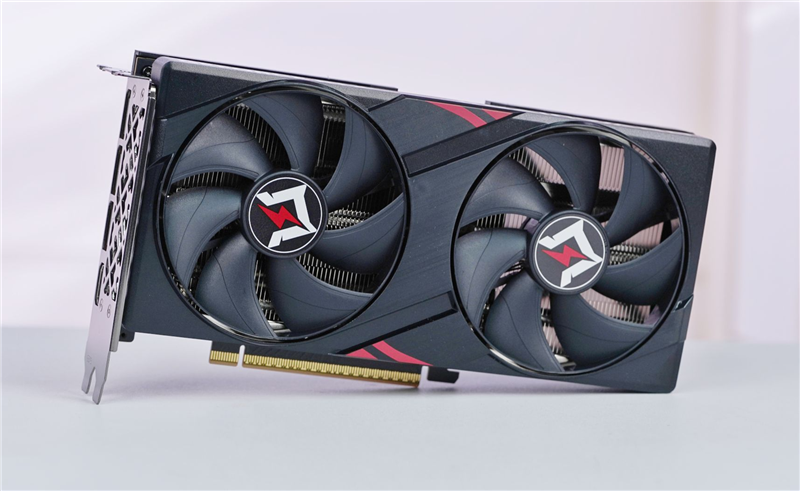
The Gainward RTX 5050 WindForce OC graphics card continues Gainward's WindForce series' classic design, featuring a striking red and black color scheme. Measuring 236x128*42mm and with a dual-slot thickness, it fits seamlessly into most compact cases.

Equipped with a full-size backplate featuring a hollow design at the tail, it effectively expels hot air, preventing it from lingering on the graphics card.
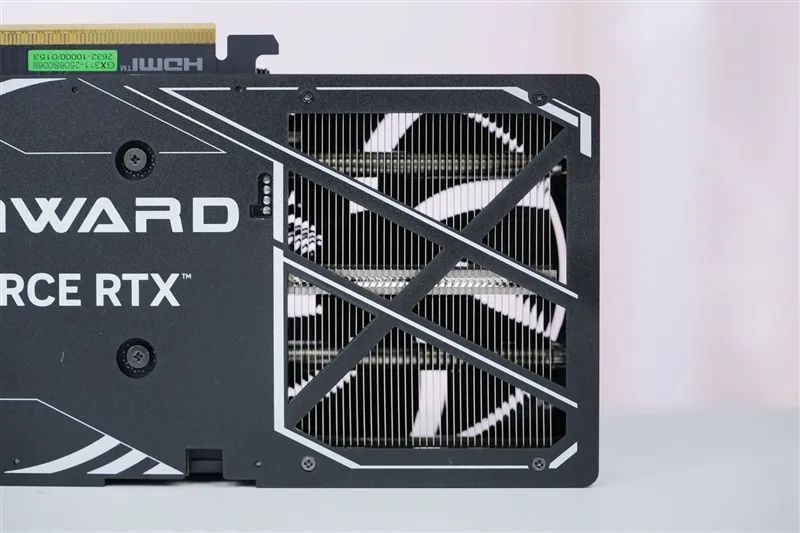
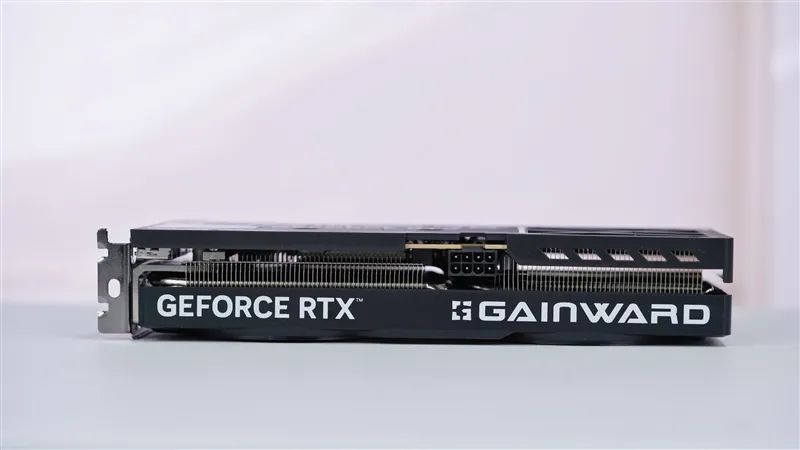
With a dual-slot thickness, the top middle section hosts a single 8-pin power supply interface.

It offers the standard trio of DP 2.1 UHBR20 ports alongside an HDMI 2.1 interface.
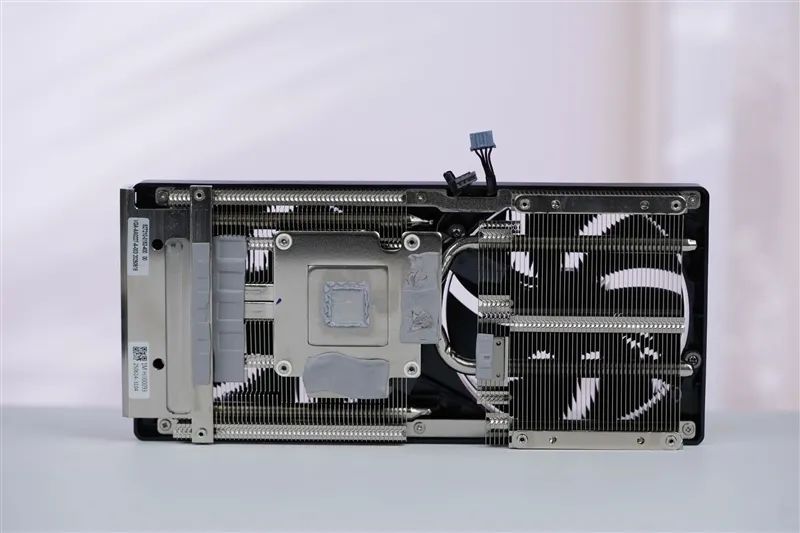
The WindForce mini cooling system comprises two third-generation Tornado Blade fans and two 6mm composite nickel-plated heat pipes.
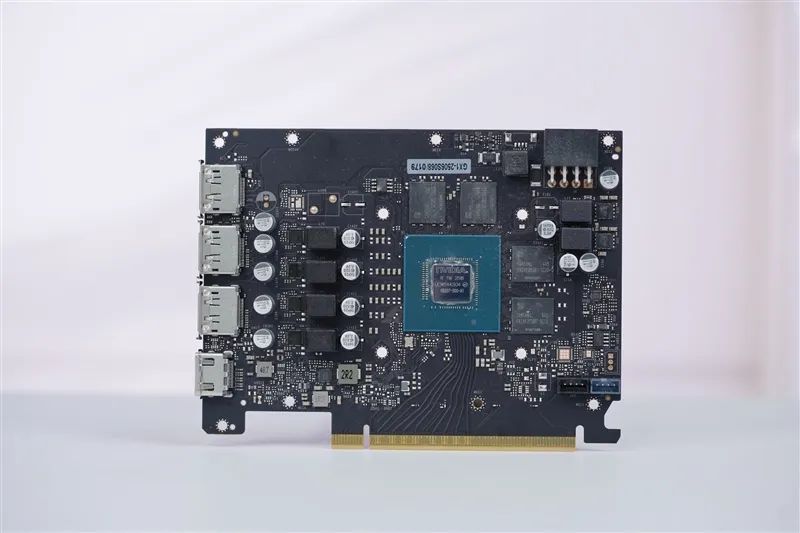
Its standard ITX-sized PCB board features a robust 4+2 phase power supply circuit, with each phase equipped with Japanese full solid capacitors, sealed inductors, and DR.MOS.

Back of the PCB board.
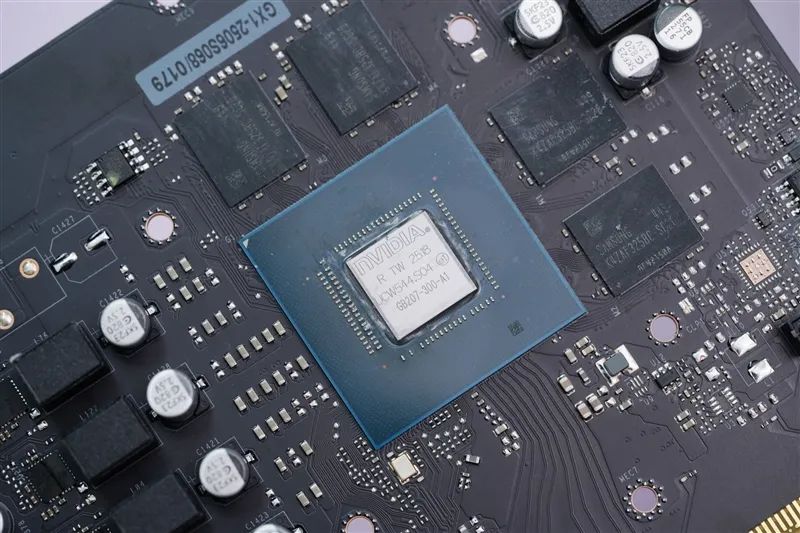
The GB207-300-A1 core sits adjacent to 8 Samsung GDDR6 video memory chips, each with a capacity of 1GB, totaling 8GB, and featuring an equivalent frequency of 20GHz and a bandwidth of 320GB/s.
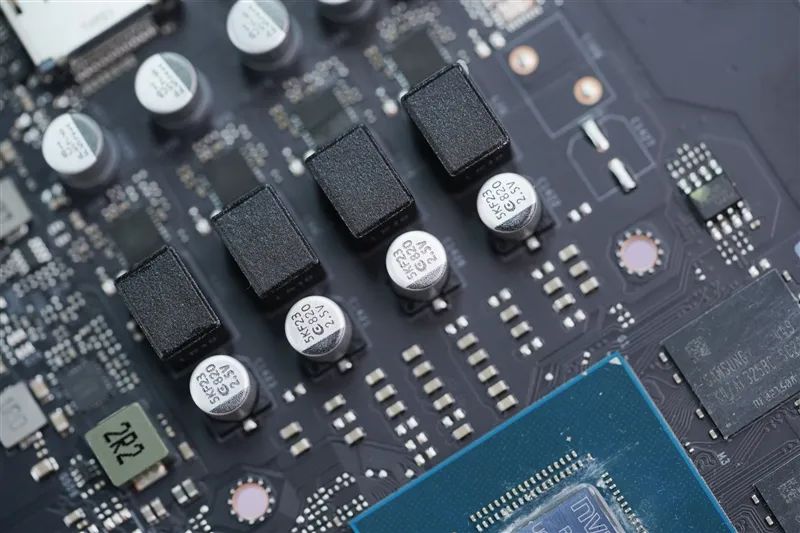
Close-up of the 4-phase core power supply.
III. 3DMark Test: Maximum Operating Frequency Exceeds 3GHz
1. 3DMark Fire Strike
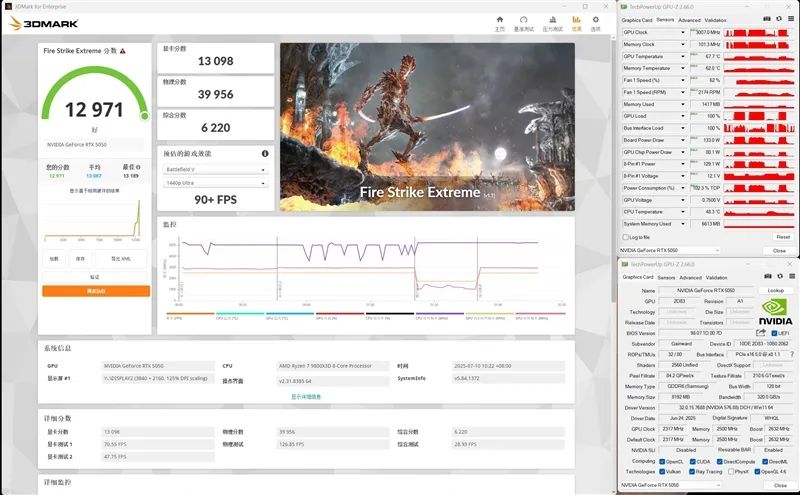
In the 2K resolution 3DMark Fire Strike Extreme test, the RTX 5050 WindForce OC scored 13098 graphics points, with a maximum core operating frequency of 3007MHz, a peak power consumption of 133W, and a maximum core temperature of 67 degrees.
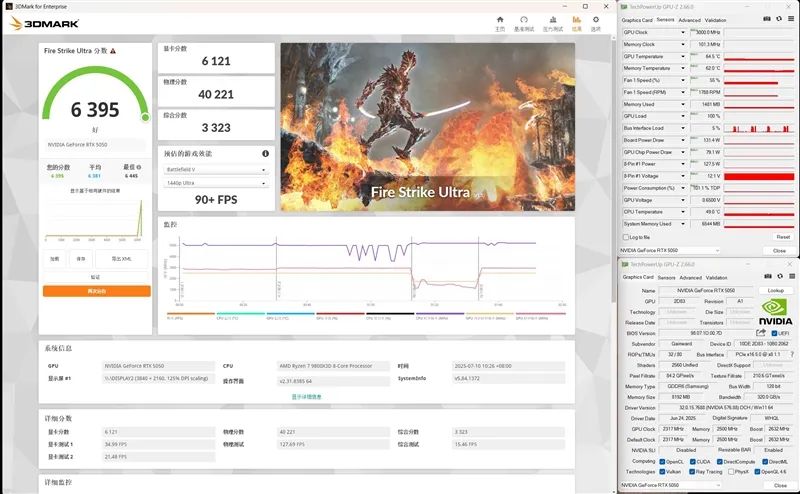
In the 4K resolution 3DMark Fire Strike Ultra test, the RTX 5050 WindForce OC scored 6121 graphics points, with a maximum core operating frequency of 3000MHz, a peak power consumption of 131W, and a maximum core temperature of 64.5 degrees.
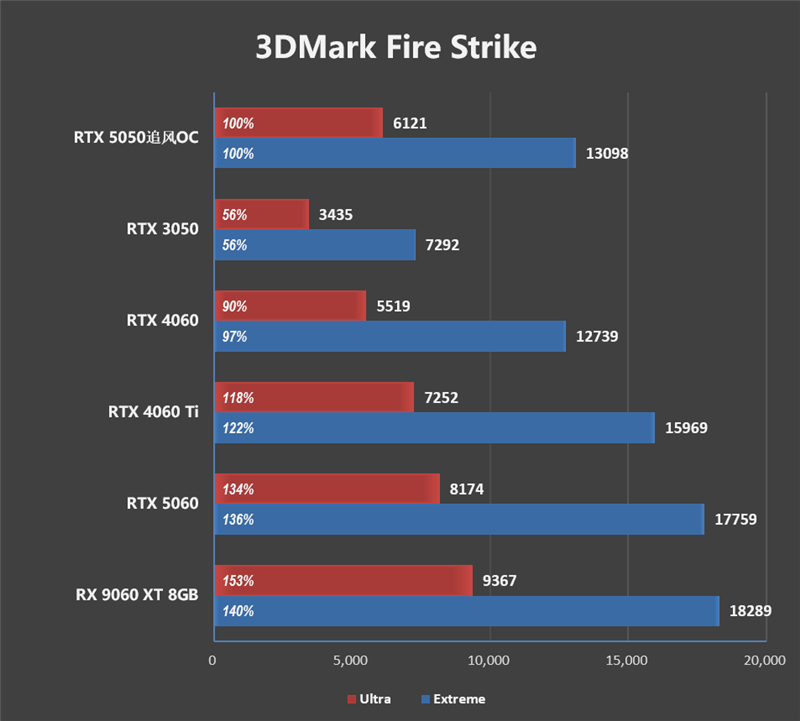
2. 3DMark Time Spy
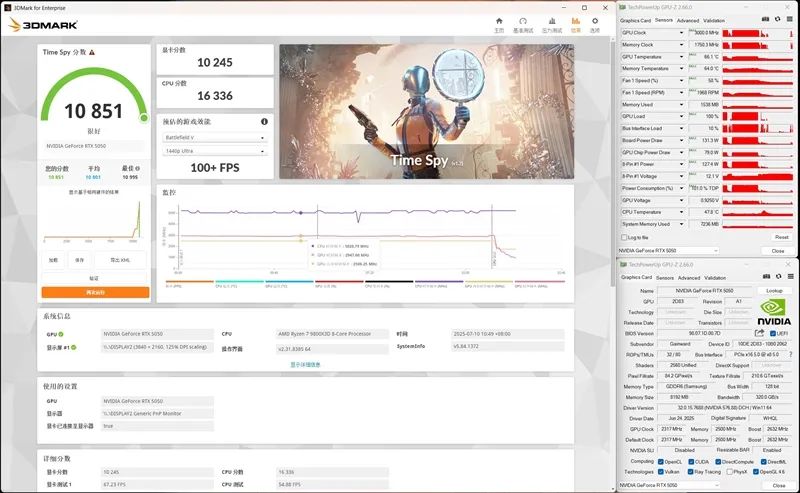
In the 2K resolution 3DMark Time Spy test, the RTX 5050 WindForce OC scored 10245 graphics points, with a maximum core operating frequency of 3000MHz, a peak power consumption of 131W, and a maximum temperature of 66 degrees.
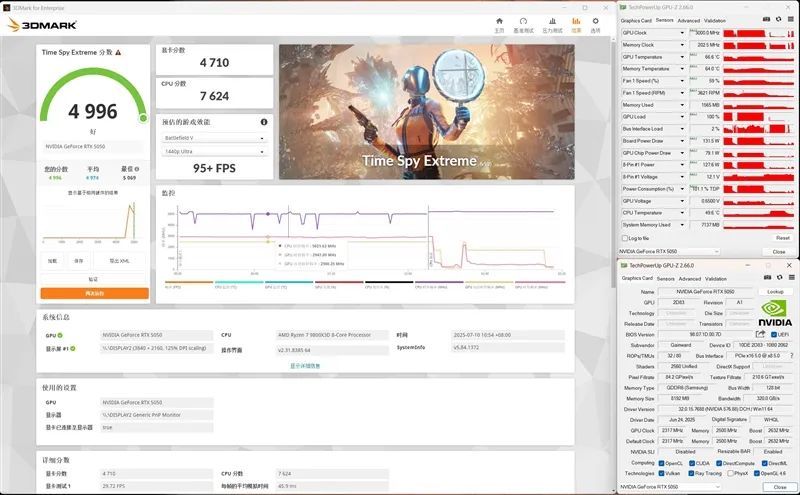
In the 4K resolution 3DMark Time Spy Extreme test, the RTX 5050 WindForce OC scored 4710 graphics points, with a maximum core operating frequency of 3000MHz, a peak power consumption of 131W, and a maximum core temperature of 67 degrees.
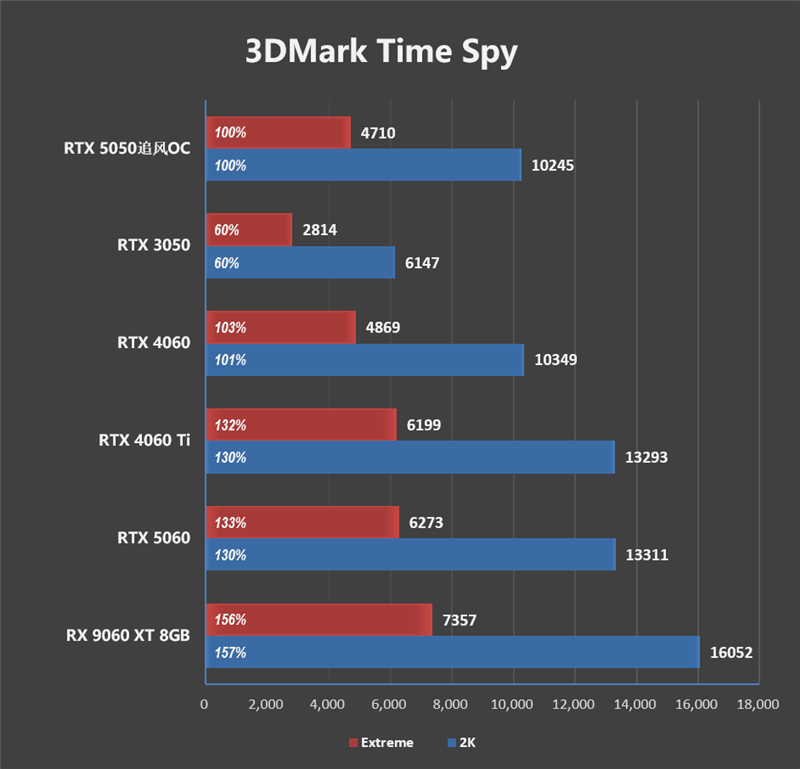
IV. DLSS 4 Game Test: Over 500% Improvement
We tested the RTX 5050 WindForce OC's ray-tracing efficiency in three games: "Black Myth: Wukong," "Cyberpunk 2077," and "Hogwarts Legacy." The tests were conducted at 1920*1080 resolution, with DLSS set to Quality mode and ray tracing enabled at the highest level.
1. Black Myth: Wukong
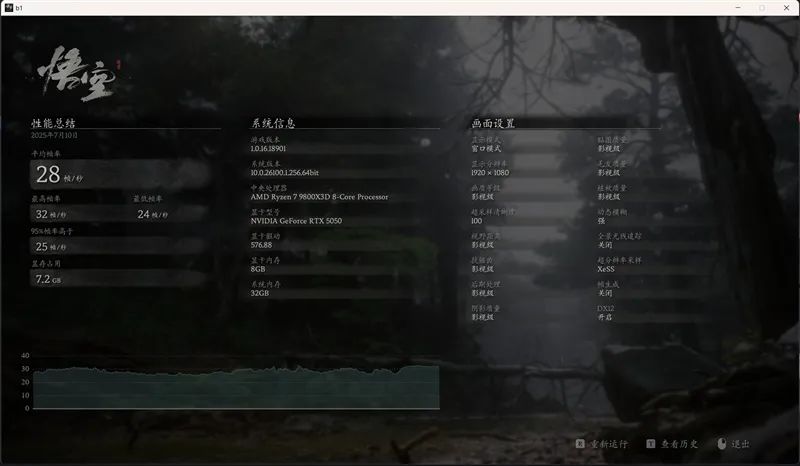
At 1080 resolution, the RTX 5050 WindForce OC achieved a frame rate of 28FPS.

With ray tracing enabled, the frame rate dropped to 12FPS.

Upon activating DLSS 4 super-resolution + multi-frame generation, the frame rate soared to 76FPS, representing an improvement of over 533%.
2. Star Wars: Jedi - Fallen Order

At the highest 1080P resolution graphics quality, the RTX 5050 achieved a frame rate of 47FPS. With ray tracing enabled, it dropped to 17FPS. After turning on DLSS 4 multi-frame generation, the frame rate surged to 108FPS, marking a 535% improvement.
3. Cyberpunk 2077
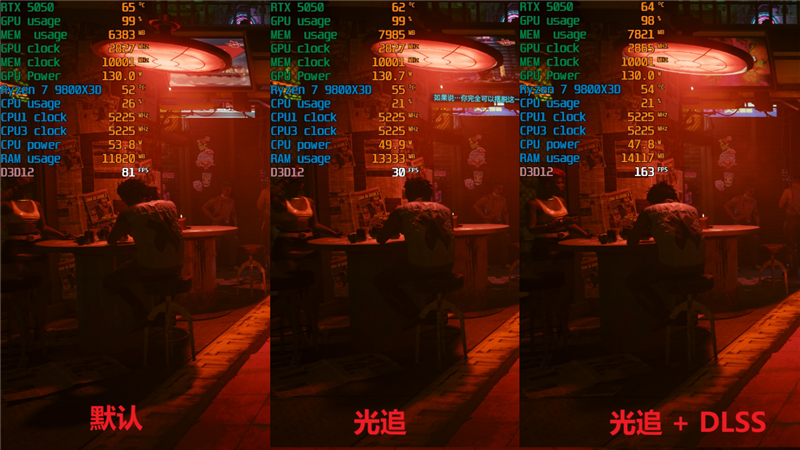
"Cyberpunk 2077" delivered a frame rate of 81FPS at 1080P resolution. With ray tracing enabled, it dropped to 30FPS. After activating DLSS 4, the frame rate increased to 163FPS, representing a 543% improvement.
4. Hogwarts Legacy
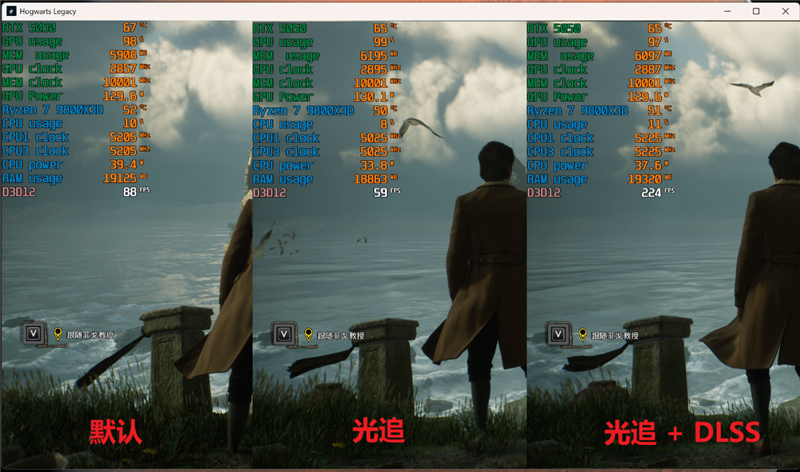
At the highest 1080P resolution graphics quality, the RTX 5050 achieved a frame rate of 88FPS. With ray tracing enabled, the frame rate was 59FPS. After activating DLSS 4, the frame rate soared to 224FPS, marking a 380% improvement.
V. Stress Test and Overclocking Test
1. Stress Test
We subjected the Gainward RTX 5050 WindForce OC to a stress test using Furmark.

With Furmark set to 1920*1200 resolution and 0AA, after 8 minutes of operation, the RTX 5050 WindForce OC's temperature stabilized at 64 degrees, with a power consumption of 130W and a fan speed of 2056RPM.
2. Overclocking Test
The RTX 5050 WindForce OC boasts a boost frequency of 2632MHz. Let's explore its overclocking potential.
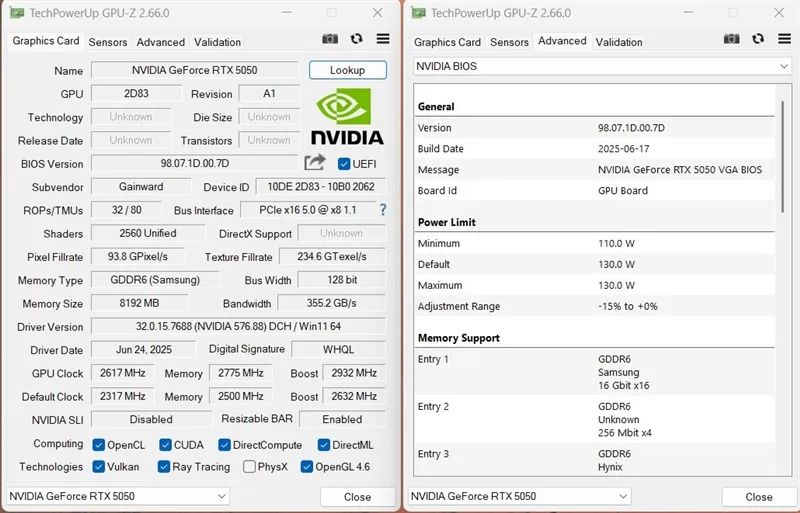
In actual tests, the core frequency was increased by 300MHz to reach 2932MHz, and it ran stably with the memory frequency overclocked from 20GHz to 22.2GHz.
After overclocking, the memory bandwidth soared to 355GB/s, surpassing the RTX 4060's 272GB/s.
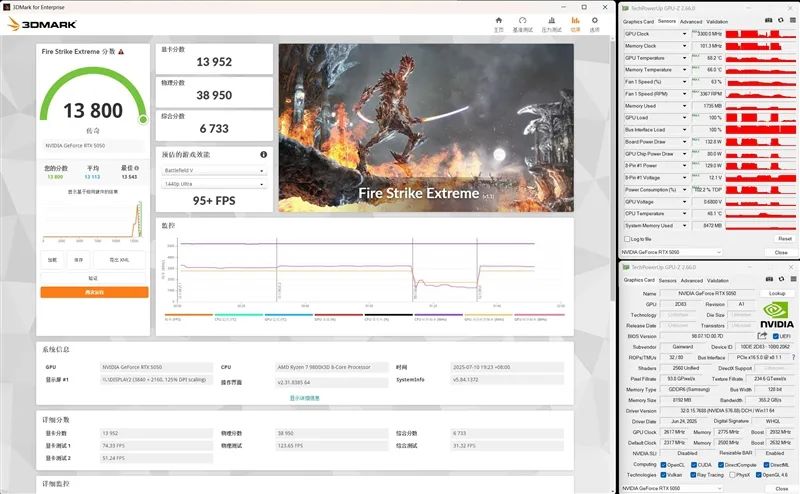
Post-overclocking, the 3DMark Fire Strike Extreme score increased to 13952, 854 points higher than the default frequency of 13098, representing a 7% boost

